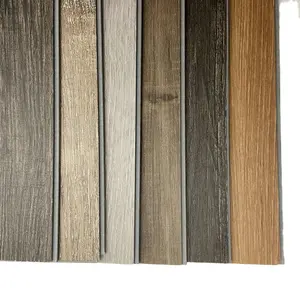
All categories
Featured selections
Trade Assurance
Buyer Central
Help Center
Get the app
Become a supplier

(5136 products available)




















































These plastic planks come in various types, and each is tailored to a specific use. These types often relate to the plastic materials used in making the boards and the features they have.
This is the most common material for these planks and often used in construction. It is strong, water-resistant, and thus perfect for wet areas like bathrooms. It also retains color and thus does not fade when exposed to sunlight.
Polycarbonate is a high-impact and shatter-resistance plastic material. It is commonly used where safety is required. For instance, they can be used for windows, safety shields, and various architectural designs. They are also transparent, and they allow a lot of light to pass through.
HDPE is also very popular due to its strength and chemical resistance features. This makes it suitable for outdoor use. It is commonly used for playgrounds, benches, and other outdoor furniture. Moreover, HDPE is the go-to material in making the plastic boards recyclable.
Acrylic is a clear plastic sold under many trade names. It is a strong alternative to glass since it is lighter and does not shatter easily. It is commonly used for signs, displays, and windows. It has UV resistance properties, so it does not easily yellow.
These synthetic planks are preferred for their durability and versatility. However, it is still very important for the users to understand their specifications and maintenance practices.
These synthetic boards require very little maintenance, and here are some of the maintenance practices one should observe:
Plastic board planks are b renowned for their adaptability. They are suitable for a wide range of applications due to their durability. Often, they will replace traditional materials like wood or metal in multiple applications.
Bathroom walls are among the most popular place where these plastic boards are mounted. The plastic's water resistance makes it a perfect substitute for traditional tiles. Besides being water resistant, the plastic is cheaper, easier to install, and much easier to replace when need be.
They are also used as stylish, water-resistant ceilings in these bathrooms. This gives the users a unified look and eliminate the problem of moisture-laden air which causes ceilings to sag or grow mold.
These synthetic boards are also used to make partitions. The light weight of these synthetic boards allows movable partitions to easily create different settings in hospitality venues like hotels and restaurants.
Plastic board planks are the go-to materials for outdoor furniture. They are water and UV-resistant; they can easily withstand all weather elements. This versatility is the reason they are preferred for picnic tables, benches, and garden chairs.
Another outdoor use is in the construction of signs, and they do this by using acrylic plastic boards. These plastic boards are weatherproof and fashionable; hence, they make reliable and vivid signs for both commercial and residential landscaping. They are also lightweight, which facilitates easy mounting.
Plastic board planks have a major application in the manufacturing of storage containers. HDPE and PVC are ideal materials for creating containers since they are chemical and water-resistant. They are also very strong and lightweight, which makes them efficient in transporting goods.
These plastic planks are also used in flooring. The flooring plastic boards provide a smooth, level surface that can repel moisture, chemicals, and other forms of weather elements encountered outdoors.
Selecting the suitable plastic board plank requires careful consideration of the material and the specific application. One of the first things to do is determine what the board will be used for. Will it be used for interior or exterior applications or for industrial purposes? This helps narrow down the type of plastic material to use for the board.
After identifying the use, carefully review the material's properties. For instance, polyvinyl chloride (PVC) is cost-effective and easy to work with and hence great for interior applications like wall cladding and signage. Polycarbonate is exceptionally strong and impact-resistant. It is therefore great for security applications.
For outdoor applications, UV resistance is a critical factor. Acrylic plastic board offers unparalleled UV protection, ensuring that signs and displays retain their appearance over time. HDPE is also weatherproof and highly durable, making it suitable for outdoor furniture and play structures.
Whenever possible, one should go for the thicker boards if they are to be used outdoors. Thicker plastic plank provides better durability against environmental elements and are impact resistant. Plastic plank that comes in diverse colors and textures gives users a wider design flexibility.
Last but not least, consider the maintenance requirements. HDPE and acrylic boards are easy to clean and require minimal upkeep. These will be ideal for low-maintenance applications like outdoor furniture.
A1. One of the major advantages of these plastic boards is that they are water and chemical resistant. This makes them ideal for industrial and outdoor use. They are also lighter than wood, making them easier to handle and transport.
A2. When well taken care of, these plastic boards can last 30 years or more when used in outdoor applications. Used indoors, the plastic boards can last even more years than that depending on use.
A3. The good thing about the synthetic boards is that they require very little maintenance. Cleaning with soap and water is often enough to keep them looking new. For acrylic boards, protective polish should be used to maintain the shine.
A4. Some of the plastic materials used in these boards can be recycled, such as HDPE. Manufacturers also produce some of these plastic boards from recycled plastics to mitigate the effects of plastics on the environment.